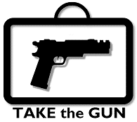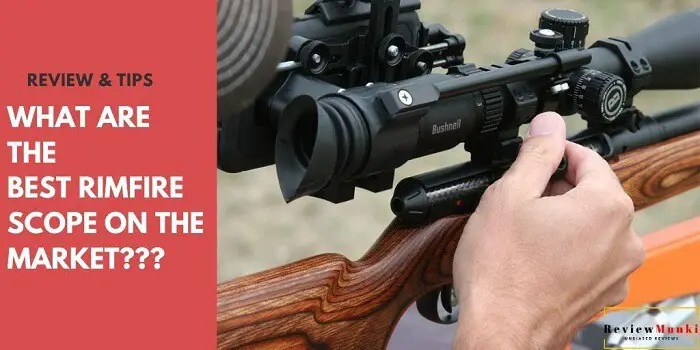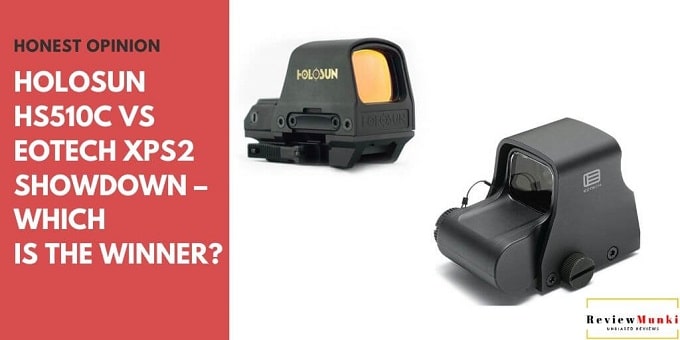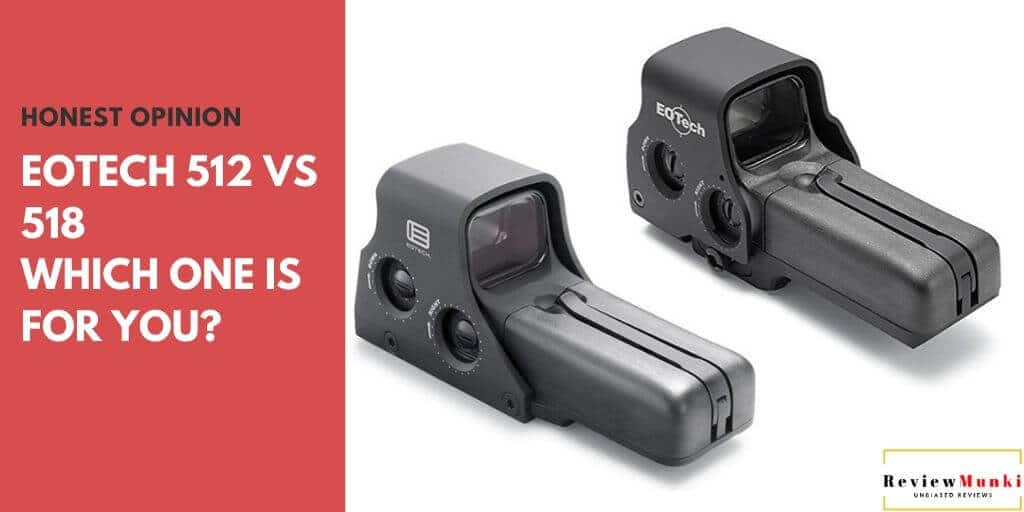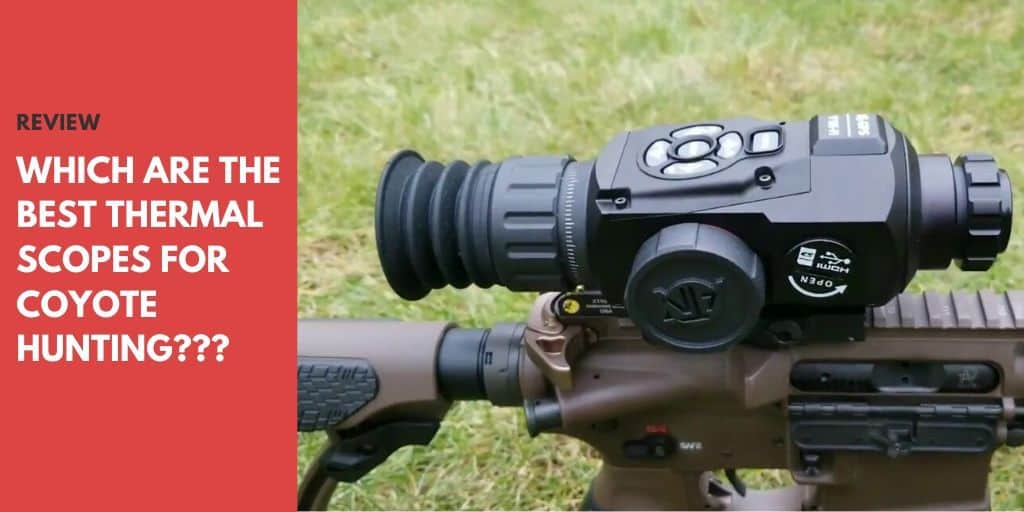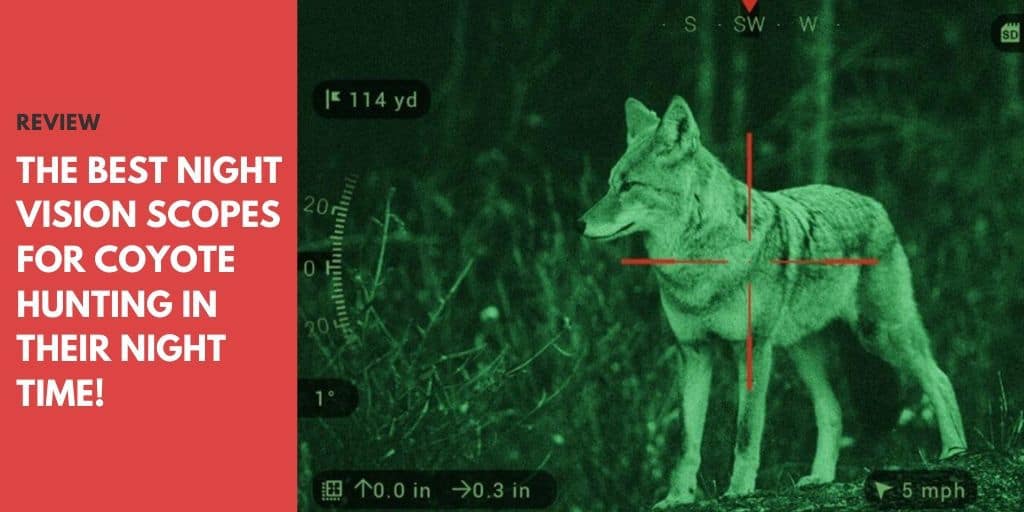Shooting using a reflex sight significantly improves the accuracy of shooting as well as feels like a pro. The market is flooded with various types of red dot sights. However, when you get the chance to use an expensive and high-end sight, you can feel the difference.
No matter how expensive reflex sight you buy, if you cannot use it properly, most likely you will not be able to shoot your targets accurately.
Struggling to aim the target even with a top-end gear? In this tutorial, I will show you how to use a reflex sight so that you don’t miss targets any further.
You can also read the full review of reflex sights in this article that I wrote!
This post is a long one. I tried to cover everything from the selection criteria to mounting, zero-ing, aiming etc.
What Is the Reflex Sight?
If you are a beginner or someone who is really up to the shooting but doesn’t know all about the gears, let me provide you a short brief about it.
Well, it’s a gear that you mount on top of your gun to be able to project the aiming point into its lens. By the name, you can guess how it functions. A reflex sight projects the image of the reticle onto a lens that reflexes back at your eye, and that’s why it got such a name.
A basic reflex sight includes a small window that allows you to see through it. Some models are packed with two lenses. It projects the image forward from the rear lens, and then you can see through the forward lens.
As the gear doesn’t have an eye relief, you can keep both your eyes open while shooting, which makes aiming very easy. You can get a battery-powered or battery-free model based on your requirements.
Apart from all these advantages, there are some drawbacks as well. You cannot properly magnify a reflex sight that you can in rifle scopes. But still, this type of sight comes extremely beneficial for defense, hunting, tactical use, and general shooting purposes.
Why Do You Need a Reflex Sight?
There are different types of sights that you can get for your gun or rifle. But, why is that you need a reflex sight, what’s the special thing about it?
Both reflex and red dot sight have some advantages over the other types of sights. They manage to acquire target even better than holographic and prism sights.
Apart from the performance issue, reflex sights are more cost-efficient than other ones. Take holographic and prism sights as an example; they both are expensive than reflex sight. Considering both performance and price factors, most hunters, as well as shooters, rely on reflex sights.
Things to Consider While You Choose the Right Reflex Sight
You will find reflex sights of various sizes, shapes, and features. One has advantages over another in multiple aspects. There is no all-purpose reflex sight. You either go for a basic model that offers basic features and functions to make your aim achievable. Or, go for an advanced model to target more efficiently.
So, you must determine your priority first; what’s the purpose of using the sight, what’s your intensity of shooting, etc.
To simplify things, be sure to check the aspects that are mentioned below to get the right sight for your shooting requirement.
Type
Based on the housing structure, there are two types of reflex sight; open style traditional reflex sight and tube or pipe style reflex sight.
The open style got conventional housing that allows you to see the reticle through the open window. This type is better for getting a wider view.
If your shooting requires filters, then this isn’t your type; open style reflex gear doesn’t have any filter.
Tube style reflex sights, on the other hand, are compatible with optical scopes. You can effortlessly install filters and protective covers in it.
The best thing about this sight is, you don’t have to struggle to see the red dot in daylights. You can easily see the red dot regardless of the time, which highly influences your seeing and target precision.
Again, if you want a wider view to target moving prey or objects, an open sight is the gear you need. You will always be alert about things around the target, so it comes very crucial in tricky situations.
Light Transmission
If the glass transparency isn’t good, no matter how well the housing sight you get, you will struggle with aiming objects. Most conventional and cheap reflex sights have cheap glasses that don’t transmit enough light to aid your shooting.
To be able to get the most out of a reflex sight, you must ensure the glass can transmit enough light through it. There should be sufficient projection of lights whether you are shooting in daylight or after sunset.
Field of View
It refers to the width of the image that you see through the sight. Some conditions also require you to see things that are around the target. In addition to that, seeing only a few parts of a target might not be convincing, and you need to see the entire target to be able to judge the movement and hit on the perfect spot.
Although a wider field view isn’t for everyone unless it’s your personal preference. For general target practicing and shooting, it’s not necessary. However, if you are mostly engaged in hunting or have an interest in participating in the IPSC competition, you need to consider this factor as well.
When you are out for hunting and suddenly find prey, it’s most likely that the targeted prey will move further. So, you need to keep up with the game and make sure it doesn’t get out of your sight. If the reflex sight doesn’t provide a wider view, hunting down will be quite difficult regardless of your skills.
Therefore, as long as it’s about hunting down animals, you must get a reflex sight with a bit wider vision.
As for IPSC, the competition requires you to constantly move from one place to another in order to shoot at the targets. So, it’s important to keep your eye on things that are around the object as well. A wider reflex sight will improve your shooting level significantly if you previously used a traditional one.
Magnification
As I have said earlier, reflex sights aren’t suitable for magnification purposes. There is no optical magnification that comes with these sights. However, you can zoom your target further; it will also enlarge the dot size, which might affect your shooting.
Occlusion
One issue that pretty much all shooters with reflex sight faces is the occlusion. It mostly appears in forms of the dust cover, blur of water, and smudges. The issue can cause by both rear and front sights.
So, basically, it’s an obstruction in between your eye and target when you see through the lens. Although you might see the red dot, the target is still blacked out. But, there is no occlusion when you target with an open and naked eye.
Now, what to do if you face such a situation? Thankfully, there is a quick fix to the issue.
If both your front and rear optic of the sight is covered, consider removing the dust cover that is close to the eye. When you remove the rear cover, it will allow you to see the red dot.
You can also get see-through dust covers to prevent further dust build-up. Make sure the dust cover is the closest one to your eye.
In addition to that, you can even shoot with an occlusion without compromising much of the accuracy if you use the non-dominant eye. When you open both your eyes, there will be less obstruction insight. So, keep the eyes open, then aim and shoot.
Night View
A reflex sight comes very handy to shoot during nights. Most of the models can illuminate lights onto the lens while providing you a clear vision with a visible red dot in poor lighting conditions.
However, not all the models are compatible with the night view. Be sure to check the manufacturer’s instruction about the night vision compatibility.
Here’s a guide on how to sight:
How to Mount Your Reflex Sight?
Once you get the reflex sight, now, it’s time to mount the gear on the firearm. But, before you proceed, make sure you have an Allen wrench and hex keys to do so. You might also need Picatinny rail attachment, depending on the model.
Mounting on Rifle
The best place to mount the gear on your rifle is its receiver end on the rail. As this position is more stable than anywhere else, it will provide you excellent shooting experience. Also, the reflex sight will be in a balanced position that ensures the accuracy of your shootings.
You will get bolts with the sight that are pretty easy to adjust using a standard wrench. Some models don’t come with bolts; you can conveniently mount on the rail or your firearm without any need for it.
Mounting on Pistol
You need a mounting place that will replace your pistol’s rear iron sight. To make it tight, consider using blue Loctite and make it well-secured. Don’t use red Loctite, as it will permanently attach the gear to the gun.
Depending on the model, you need to screw the sight or mount it without using any bolts.
How to Aim with Reflex Sight?
When you are done with mounting the sight onto your gun, let’s proceed further to be able to shoot using it.
There are some essential factors that require your attention to be able to aim and shoot successfully, such as focusing, firing position, environment, etc.
Your dominated eye will see the red dot when the sight will move to its front side. It takes a few moments for the red dot to reach the aiming point.
Here are the techniques of how to sight in a reflex sight –
- First, you need to focus on your target, not through sight. Keep your eyes open and judge the distance between you and the target. Also, take a look at the environment around the target.
- Bring your gun to a comfortable position. If it’s a rifle, bring it up close to your cheek. People do it wrong when they bring their head down to the gun. The stock needs to be close to your chest.
- Now, see through the lens. You will see the reticle on sight. Place the reticle on the exact spot of your target that you want to hit. Once everything seems fine, you are good to go; pull the trigger.
If you follow the technique above to practice, it will significantly increase your speed to acquire and engage in the target.
How to Zero a Reflex Sight?
If you have used a rifle scope before, then you are probably familiar with the term; zeroing a reflex sight is pretty similar to that.
When you are to zero the sight, turn the optic off. Flip it down once it’s zeroed if possible. From here, to turn it on, you need to follow the manufacturer’s instructions as the system isn’t the same for all models.
There is no need to use the iron sights after zeroing the reflex lens. However, you can still use iron sights to index the optic when you aren’t tired of sighting.
How to Co-Witness with Reflex Sight?
If you aren’t familiar with the term co-witness, well, it refers to a state when both the iron sight and reflex sight are lined together, and you see through your target.
When you align the iron sight to the center of the reflex sight, it’s known as absolute co-witness; another setup is one-third of the reflex sight, which is known as low 1/3.
You will find many professional shooters and hunters believe that it’s essential to correspond the iron sight exactly to the reflex sight. There are both advantages and disadvantages of co-witnessing both the sights.
If you like the idea, align the red dot of the reflex sight a bit higher with the front sight. Otherwise, you might obscure your targets.
Setting the red dot perfectly centered on the front sight might not be a good idea; if you are convinced with this setup, see how the accuracy of your shootings is. If you are happy with the accuracy, you can keep it; or set the red dot a bit above, as I have mentioned earlier.
Advantage of Co-Witness System
Co-witness comes very useful, especially when your optic lens runs out of battery or there is some other problem with it. When you’re unable to flip down the front sight, setting the iron sight to one-third lower in the optic lens’s picture can help you to hit targets without much compromising.
So, the main purpose here is to zero one sight system using another one. That means, your iron sight is zeroed when you use the reflex sight; similarly when you use the iron sight, the reflex sight is zeroed.
Shooting Range
When it’s about shooting range, you need to keep in mind that it’s about how far the bullet can travel with precision; not what distance the bullet can travel.
So, as far as the effective shooting range of reflex sight is concerned, you can take down targets within 100 yards without much issue. The distance can be more or less depending on your shooting skill, the accuracy of the sight, dot size, environment, lighting condition, target type, and magnification.
However, both red dot and reflex sights aren’t for long-distance shooting. They come great for fast target acquisition.
Final Words
Now that you know how to use a reflex sight, you can improve your shooting skills faster. If you are concerned about reflex sight vs red dot sight, despite having some key differences about how they work, it’s pretty much the same way you need to aim and shoot down targets on both these sights.
